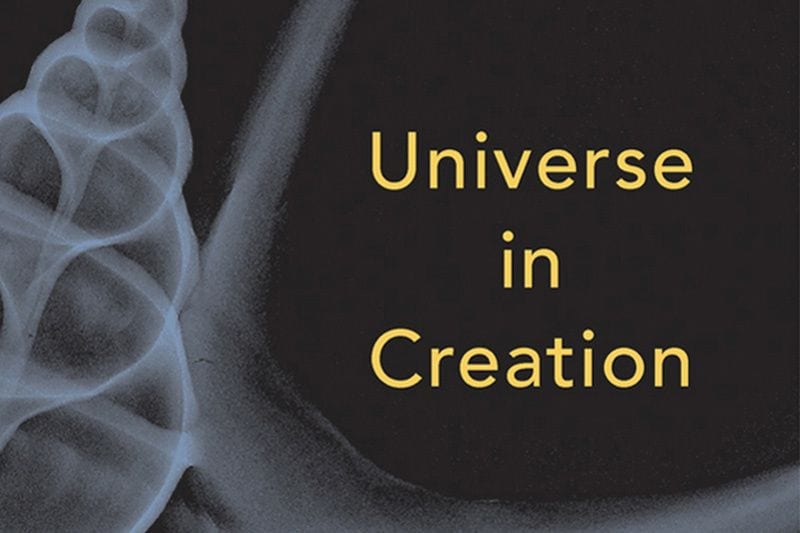
The essential question in Roy R. Gould‘s Universe in Creation: A New Understanding of the Big Bang and the Emergence of Life is how do we make sense of what the universe has been doing? One might assume a technical book detailing recent advances in cosmology and quantum physics laid as bare as possible for the casual reader. But Universe In Creation is both less and more than this, and Gould’s approach in stating his question and developing its lines of reasoning exhibit care and economy. It’s less than a conventional science book because Universe In Creation consists of scientific and historical inquiries, broadly and thematically arranged, that are episodic and designed to simplify technical concepts. It’s a work of popular science rather than a systematic or academic work, befitting Gould’s role as a science educator at the Harvard-Smithsonian Center for Astrophysics. It’s a slim volume and its arguments are oriented towards changing perspectives and preconceptions on established subject matter.
Whether it’s also more than a conventional science book will depend on the reader’s willingness to follow Gould down some unusual, speculative, and somewhat philosophically dicey paths. His goal and conclusions are meant to provide answers to the biggest questions of astrophysics, the origins of life, the nature of reality, and the threads that tie them together. The key to his approach in answering the question of how to make sense of the Universe is the idea that it has a plan, and part of that plan is the emergence human life.
There are curious propositions in the foregoing sentence that require unpacking. That the Universe has a plan – possesses, and in a personified manner – is not merely a rhetorical device for Gould. The Universe has (and is) a character here and this character is not comprised solely of a collection of chance encounters, and the emergence of life in it is not a random accident. Rather, the Universe has been revealing to us the story of itself and the blueprint contained within it from its origins, continuously unfolding itself into existence, bringing order to chaos, and fine-tuning conditions for the emergence of life.
Readers familiar with the philosophical debates that have orbited the theory of evolution since its formulation in Darwin’s On the Origin of Species in 1859 will feel the raising of their hackles upon Gould’s use of the term “fine tuning”. The argument that the conditions for the emergence of life are fine-tuned is, of course, closely related to what is known by philosophers of religion as the argument from design. Both stress the unreasonableness of concluding that the complexity and apparent perfection of life could have arisen randomly and flourished continuously despite the hazards that besiege it in a hostile Universe. Life must, so the arguments go, have been designed in the first place and been allowed to continue in conditions carefully fine-tuned specifically for it. It must, furthermore, have been designed by something and had the conditions in which it persists fine-tuned by something, and not merely been the outcome of blind evolutionary forces. But by what?
Although one feels compelled to arrive here by the pressure and momentum of Gould’s arguments, I doubt that it’s entirely fair to saddle him with it, at least not the simple version outlined here. He carefully and explicitly disavows a key ingredient in the argument from design in the first chapter: “I take the poet Walt Whitman’s advice to ‘make no arguments concerning God.'” And, he continues, “we still cannot prove that life follows inevitably” from the Universe’s building plan. So Gould shakes off some trappings of the argument (God, inevitability) but nevertheless leaves the reader to decide whether his Universe, which is going somewhere and which is trying to accomplish something on its way – one of those things is life itself – is a kind of de facto argument from design with the universe-as-entity replacing divine providence.
Still, to pause so long over this element of Gould’s argument feels like a disservice because there are details throughout Universe In Creation that highlight fascinating and mysterious coherences in the fabric of existence. In his discussion of convergent evolution, for example, he cites Darwin as well as recent evolutionary biology. The eye and the electric organ in the eel, to take two examples, have appeared (hence converged) independently multiple times across multiple species. We might, for the moment, put aside the question of whether convergent evolution suggests that life evolves along deterministic lines or is actually just a striking fact of natural selection shaped by certain pressures. We might instead, following Gould, see it as evidence that these processes are connected by a plan or a script that emerged with the Big Bang itself: “Not a script set in stone but the kind that some directors use when they give the players great freedom to improvise.”
Gould scales this basic idea – of connection, consistencies, coherences – up into giant celestial bodies and down into the atomic level. Throughout, the idea and the premise of Universe In Creation has an emotional appeal – we are not the products of a chance reshuffling of matter by random mechanical processes but are intertwined with the Universe, part of its grand story of self-creation, products of a plan and infrastructure set in motion 13 billion years ago, still unfolding as we are learn to see ourselves in it and connected inextricably to all elements of it in mysterious ways. The reader’s mileage will vary, but Gould shows it has some scientific appeal as well.

